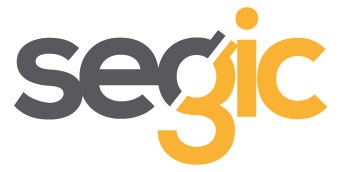By: Danny Boulanger | August 22, 2023
Introduction
In the insurance world, one concept is gaining traction: self-insured or self-funding. As its name suggests, self-insured allows an organization to insure itself against risks it’s willing to take on, by setting aside funds to cover potential claims instead of paying premiums to an insurance company. For risks it doesn’t want to shoulder, the individual in charge of financial agreements will negotiate a stop-loss arrangement with an insurer. On the other hand, self-funding is an approach where the organization directly pays for specific benefits without an intermediary. In a union setting, these methods provide unprecedented flexibility and autonomy. This is where Segic comes in.
In a French article featured in the “Business Journal,” you’ll find an explanation highlighting the benefits of a self-insured or self-funded schemes: https://bit.ly/3OkUje4
However, we do have concerns regarding the two challenges mentioned in the article:
– Challenge in predicting the required budget
– Calculating taxable benefits can be complex and might cause significant fluctuations for very small groups. When there are deficits, it becomes challenging to reclaim these amounts from employees.
In reality, with an intermediary (broker or actuaries) experienced in self-insured, they can efficiently plan a theoretical premium at the necessary level to meet the financial needs of the self-insured scheme.
Segic: An All-in-One Platform
In the intricate landscape of insurance, Segic emerges as an integrated solution enabling unions to manage their benefits program effectively. The platform goes beyond traditional group insurance. It also provides a union the ability to offer a range of optional and individual benefits for members through the Benefits Marketplace. Segic’s major innovation is its self-enrollment system linked to this Benefits Marketplace. This mechanism allows employees not just to thoroughly understand the group benefits on offer but also to access optional and individual benefits. These perks extend far beyond traditional insurance, providing volume discounts on home, car, life insurances, and more. Furthermore, members can enjoy a variety of wellness benefits, meeting a growing demand for additional well-being offerings.
Segic’s Specific Benefits for the Union World
– Total Autonomy: With Segic, unions have a platform that gives them complete control over processes, from administration to claims processing and payments.
Explanation: In a traditional insurance model, unions often rely on middlemen for management. Segic shifts the dynamic by placing power directly into the unions’ hands.
– Reduced Costs: Centralizing and optimizing processes result in significant savings.
Explanation: By eliminating hidden costs and benefiting from volume-based discounts, unions can substantially cut expenses.
– Additional Benefits for Members: Beyond insurance, the Benefits Marketplace allows you to provide a range of exclusive perks, leveraging the purchasing power of the union group.
Explanation: Unionized members can access special offers and benefits otherwise unattainable in a conventional insurance framework.
How Segic Strengthens Unions’ Negotiating Power
With a clear overarching view of needs and costs, unions can negotiate with providers in an informed manner, ensuring the best terms for their members.
Case Study
Many unions in Canada and Quebec have embraced self-insured or self-funding. Those who have assessed the financial advantages of self-insured have recognized economies of scale, not to mention enhanced service to members.
Here’s a case study: The self-insurance experience of the Montreal longshoremen’s union.
The decision of the Montreal longshoremen’s union to turn to self-insurance was carefully considered. It’s a strategy that, although promising, requires meticulous preparation and solid expertise in the field. One of the key factors to consider was the size of the group. As indicated in the article, the size of the collective has a determining influence on the viability of self-insurance. Fortunately, the union, with its dedication to targeting the interests of its members, was well positioned to adopt this approach.
But sheer willpower is not enough. The union understood the need to build a strong team to ensure the success of this transition. This meant integrating not only dedicated employees but also specialized consultants – pharmacists, dentists, actuaries, to name just a few – to cover all aspects of the self-insured regime. These experts played a crucial role in ensuring that the union had the necessary knowledge to navigate the complexities of self-insurance. One of the major challenges was the management of catastrophic drug claims. In this context, the union benefited from pooling with SCAMQ. This alliance ensured that their self-insured scheme was as robust and secure as those of other insurers.
In the end, even with an advanced technological platform like Segic to facilitate management, the importance of having seasoned experts on board cannot be underestimated. These experts complemented the technological solution, ensuring that the union was not only equipped with the right tools but also with the right expertise.
Conclusion
The current era of insurance demands innovation and adaptability. Self-insurance and self-funding emerge as promising solutions, especially in the union sphere where flexibility and autonomy are paramount. Segic, with its integrated design and union-centric approach, represents a sea change in how group plans are managed and administered.
By not only providing efficient management of traditional group insurance but also a slew of optional and individual benefits, Segic equips unions with the tools needed to maximize value offered to members. Moreover, by bolstering unions’ negotiating strength, it ensures optimal conditions for members. As the benefits landscape continues to evolve, it’s evident that platforms like Segic will play a pivotal role in shaping the future of group insurance.


